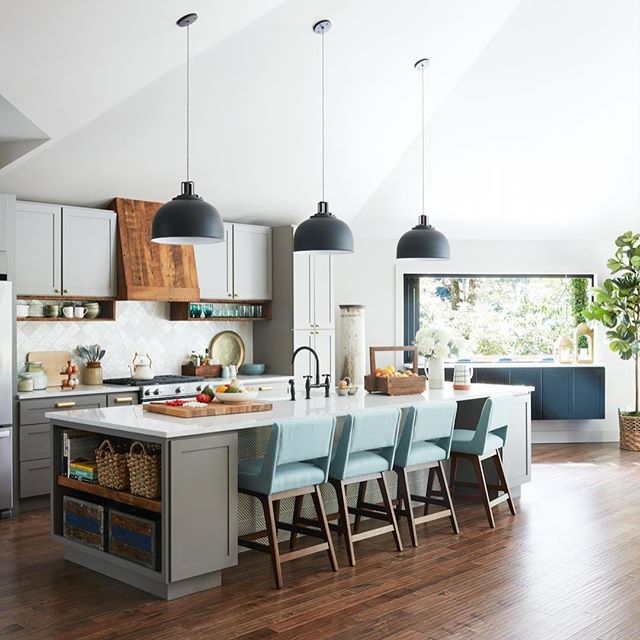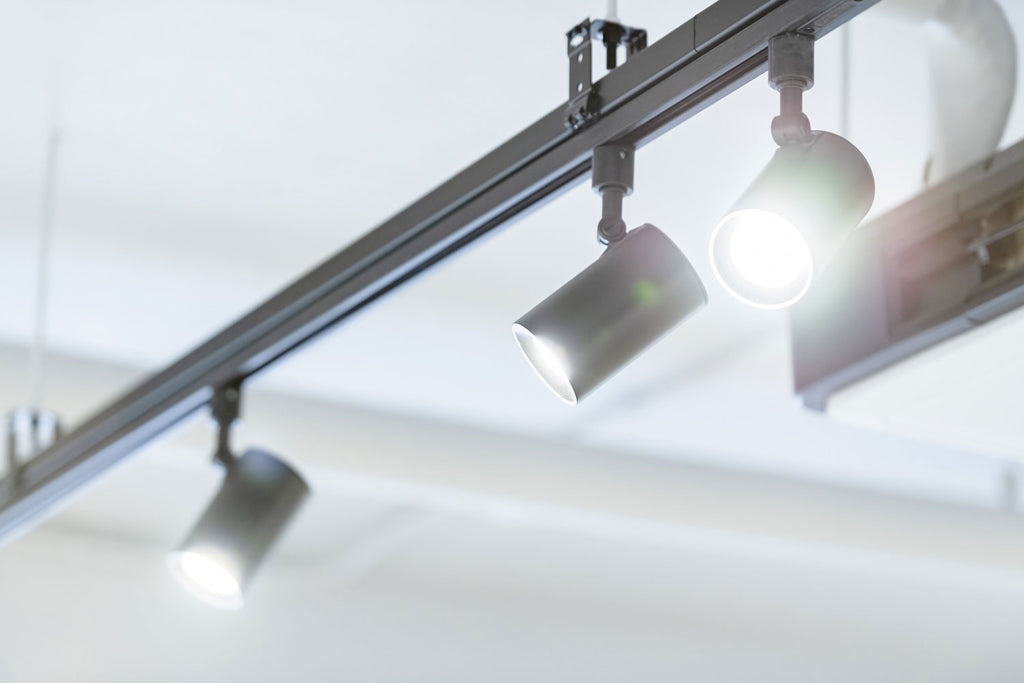On orders $99+
On orders $99+

No two types ceiling lights have the same exact characteristics. Each fixture type has one or more features unique to other lights which impacts how the lights effects the room. However, with so many available options, it’s difficult to narrow it down to the ones that will work best for your lighting purpose. How do you choose from a close to ceiling light, hanging ceiling light, or other available options? Aside from how the light is designed, factors such as room style, size, and atmosphere have a huge influence in the decision-making process. Ceiling lights also have different levels of installation difficulty that will affect your lighting budget. The process of finding the right fixture can be overwhelming. Luckily, our guide will help you find the perfect fixture that will get the job done!
These lights are ideal for providing overall light for a hallway, closet, or smaller room. Flush mount lights and semi-flush mount lights are your options. Choosing between these two lights depends on the size of the space you want to illuminate.
Flush Mount Fixtures
Because they are typically used for function rather than style, flush mounts are flushed against the ceiling for a discreet appearance. They are usually between 12” and 24” wide and provide ambient lighting for large, medium or low ceiling rooms that are less than 8’. Installing them in high ceiling rooms will leave too much empty space on the ceiling. Place them in a bedroom, hallway, closet, dining room, kitchen, and an office or study. People tend to put smaller flush mounts in the hallway, closet, or bathroom. Flush mounts help prevent collisions, whether with tall people or children jumping on the bed. Designed to direct light downward, these fixtures provide adequate lighting without drawing attention to itself. Keep in mind, the type of room where determines the diameter and bulb of the flush-light.

Flush mount light
Semi-Flushed Mount Fixtures
Semi-flushed mounts look like a hybrid of a flush mount and chandelier. They fit with any room that is between 8’ and 10’ high, so long as it hangs 4” to 8” below the ceiling. Because these lights have a 1ft clearance from the ceiling, changing bulbs is an easier process than flush mounts. Semi flush mounts simultaneously emit light upward and downward, increasing the appearance of the length and width of the room. A kitchen, foyer, bedroom, patio and low-ceiling dining rooms are good locations for these fixtures.

Semi flush mount
Close to ceiling lights come in many styles, shapes, finishes, and designs. Make sure they work with the tone and decor of the room. For example, flush mount crystals would complement a formal or elegant space. There are also cost effective and energy efficient options, including close to ceiling lights in the form Energy Star close mount lights and fluorescent bulbs. Fluorescent bulbs have models available for any room, light larger spaces, and save you more money than incandescent bulbs. Keep in mind, even if a close to ceiling light will work in a space, it’s not always the best option. Consider using a floor lamp for ambient lighting when you don’t want to deal with any wiring installation. For low ceilings, consider hugger ceiling fans with lights. That way you can brighten the room, while keeping it at your ideal temperature.
(Helpful Links: Benefits of Switching to LED Lighting / Hugger Ceiling Fans: The Perfect Solution for Low-Ceiling Rooms)
Look for a fixture that can give you ambient, task, or spotlighting for a room with a high ceiling? You’ll want either a chandelier or pendant for the job. These lights are for ceiling 10’ or higher and are used for visual intrigue, such as hanging a few at varying lengths.
Chandeliers
Chandeliers are decorative fixtures, serving as focal points. Multiple light sources either hang or surround a stem or chain affixed to the ceiling. You can choose the tradition chain-hung chandelier or a chandelier that suspends from a distance close to the ceiling. They may serve as ambient lighting for several rooms, including the dining room, foyer, bedroom, child’s room, and master bath. The more branches a chandelier has, the more light it emits. They come in many styles and sizes, from simple to intricate and everything in between. Consider style and hanging length. Leave no more than 30” between the surface of your dining table and the bottom of your chandelier. Too high and it’ll seem smaller, too low and it’ll look too big. The chandelier’s diameter should be half the table width. To calculate its diameter for other rooms, add the length and width of the room. Chandeliers are well-suited for large open spaces. If you want to enhance room size, get an up-light design. Hiring a professional to do any wiring will run about $100-400, but simply replacing a chandelier will cost less.
(Helpful Links: Chandeliers: Sizing & Placement)

Pendant Light Fixtures
Pendants tend to have basic designs since they are more so functional than decorative. Sometimes they are referred to as bowl pendants, their common shape. However, they are available in decorative designs and different finishes. Pendants have one light source with one or more bulbs and hang low like chandeliers for a noticeable appearance. So, if you are going for visual appeal, make sure the lights match room theme and decor. Mini pendants may be used for a decorative touch in small rooms where space for decor is limited. Interested in functionality? Then pendants with simple designs in foyers and hallways will discreetly illuminate those areas. Open the space and create ambient light with inverted pendants that shine upward onto the ceiling. They tend to be hung over kitchen islands but can create a relaxing atmosphere in bedrooms or living rooms. Direct light down onto your kitchen workspace or dining room table for task lighting with downlights. Or install them above your foyer. Create ambient lighting either hanging multiple pendants in one room or supplementing a flush light.

Pendant Lights
Recessed lights, also known as can or pot lights, are usually mounted onto the ceiling in groups. Multi-purpose and inconspicuous, they provide ambient, task, or accent lighting. Brighten a kitchen, the family room, hallways, office or study, or playroom. Recessed lighting come in handy on low ceilings or small rooms with sloped ceilings. They won’t light an entire room unless you install several fixtures in a small room. The light fixture is hidden in the ceiling and has an exposed trim surrounding a glass panel that diffuses the light. The trim allows the fixture to blend into the ceiling. Eyeball trims are difficult to install but useful for creating all three lighting layers. Direct them towards the wall to spotlight artwork, create task lighting over workstations, or use them to reflect light off the wall to open up the room and provide more light. Set them up in a linear or square fashion. Make sure the installation location has good insulation to prevent moisture from entering the fixture. There are many styles of recessed lighting options, even era specific designs. Installation will cost anywhere from $130 to $200.
Track lighting provides task lighting or accent lighting. Individual lights with pivoting arms along a metal track that is either mounted or suspended. This design gives you the freedom to redirect the lights for spotlighting any location. Rail light are like track lights because you can create your own layout. However, you can adjust the shape and position of the rail, and, depending on the model, the light fixture. These lights ideal for lighting corners and if you want to customize a curved setup.
Track lights are functional, so they aren’t available in many colors. How you use track lighting depends on the lighting layer you want to create. They are common fixtures in kitchens and bathrooms but they can substitute semi-flush mounts in modern rooms. Combine track lighting with pendants hung at different lengths adequately bright task lighting. Place them in the family room, great room, hallway, or kitchen. Installing track lighting will cost about $500 if done professionally.
(Helpful Links: Are Track Lights Universal?)

Track Lights
Island lights
Island lighting is reserved for modern kitchens as task lighting and hang lower than track lighting. They have a single light at the bottom of a stem that directs light downward to create a focal point. Hang multiple lights to beautify a space and increase brightness.
Utility lights
Shed light onto your garage workspaces with utility lighting. It provides brighter and energy-efficient light perfect for lighting other areas, such as the laundry room and basement. You can mount the lights flush to the ceiling or use the casings, which are designed for LED bulbs.
LED indirect lighting
Line your ceiling with energy efficient LED indirect lighting. There are light strips that you position towards the ceiling to reflect light for a bigger and brighter space. Hide the lights by installing crown molding along the ceiling. LED indirect lighting is an easy DIY project for modern rooms and have fun color-changing light options to add visual intrigue.
Ceiling lights can offer it all! Illuminate an entire room, light a work area, or elevate visuals. You must create a lighting plan, know your lighting purpose, and then look at the types of lights that will produce your desired results. Following this guide will put you on a comfortable path to finding the right ceiling light that will suit your lighting needs.
Leave a comment